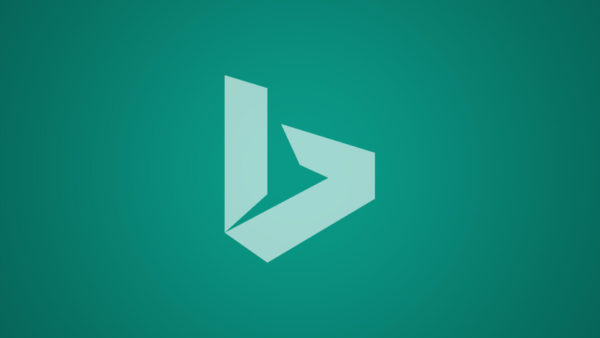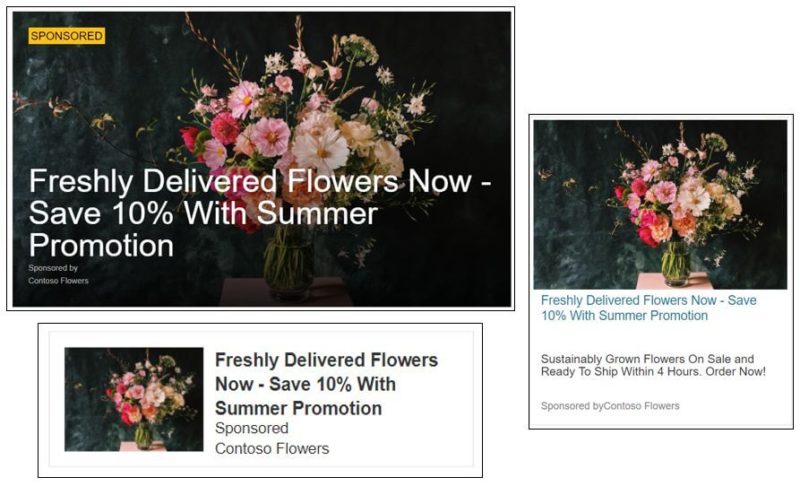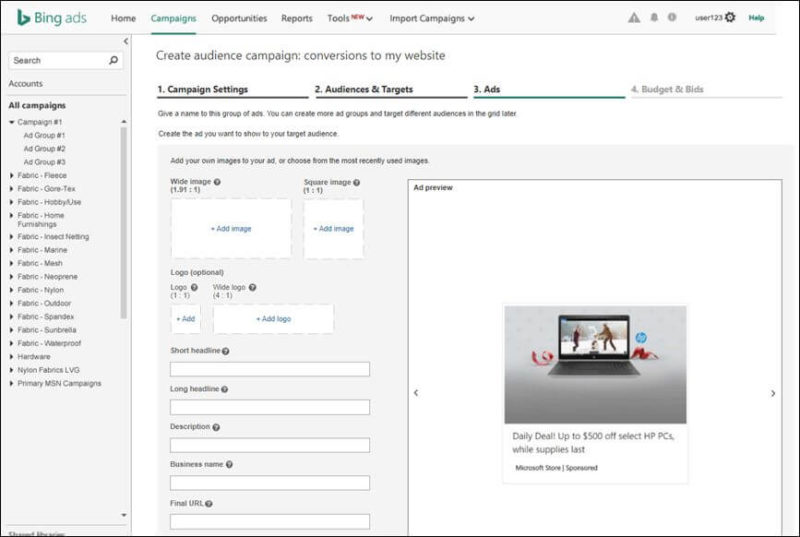More details on Microsoft Audience Network: Workflows, ad formats & how to target with LinkedIn data
How it works and what makes MSAN different from other ad networks
Earlier this month, Microsoft announced the launch of the Microsoft Audience Network, accessed through the Bing Ads platform. We’ve now received more information about the beta, including some workflow screen shots that help give more color to the new Microsoft Audience Network.
This is an evolution of the Bing Audience Network and Bing Native Ads which launched in beta in 2015 to extend the reach of US search campaigns to MSN.com. The new offering leverages artificial intelligence, new data sources for audience targeting, additional levels of control, expanded inventory and responsive ad formats.
Microsoft Audience Network (MSAN) encompasses native ad inventory on MSN.com, Microsoft Outlook and the Microsoft Edge browser, as well as syndication partner sites with what are now called Microsoft Audience Ads.
The network uses artificial intelligence (AI) to optimize ad selection and relevancy, as well as pricing, click and conversion predictions. The Microsoft Graph underpins the audience targeting data available to MSAN, including web and search activity, demographic and consumer behavior activity, and for the first time, select LinkedIn profile dimensions.
Bing Ads’ Universal Event Tracking (UET) is required for MSAN targeting and conversion tracking to function properly.
Two ways to run Microsoft Audience Ads
Advertisers have the option of simply extending the reach of search campaigns to Microsoft owned and operated properties like MSN.com with the native ads. This option remains in beta in the US, the UK, Canada and Australia. This is the simplest option but also one with limited options and control. If you have access to this beta, you’ll notice the option has been renamed Audience Ads Bids at the campaign settings level. ![]()

Microsoft Audience Ad formats
Microsoft Audience Ads come in two responsive formats, including one for dynamic product remarketing ads that is now in pilot.
Image-based ads feature an image, headline and description. Advertisers can use existing assets from Google Display Network, Yahoo Gemini and Facebook campaigns. Bing Ads supports the same aspect ratios that those platforms use: the wide image (1.91:1) and the square image (1:1).
Feed-based ads are dynamic remarketing ads. By connecting a feed in Bing Merchant Center to a feed-based MSAN campaign, advertisers can remarket to site visitors and customers with ads for the specific products they viewed or added to their cart. Feed-based ads promote those same products to customers. Advertisers can associate product audiences lists at the ad group level and set the duration window for each list separately, as shown below. This option is now in pilot.
The differentiators
Microsoft still has agreements with Oath (AOL) and AppNexus to sell display inventory on its properties, but only advertisers who buy inventory through Bing Ads will have access to the Microsoft Graph data. That’s the differentiator, along with the AI, that is delivering better results and has advertisers excited about the MSAN, says Microsoft. The company also stresses that brand safety considerations are baked into how and where ads appear on its own sites and on syndication partners.









